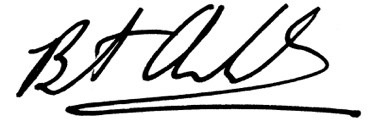Editor’s Message
[1] Greetings all, and welcome to Volume 30, Issue 3 of Music Theory Online! In contrast to many of the communiqués fashioned to head past installments of our storied journal, this present one shall offer neither any seasonally flavored homilies nor hints of behind-the-scenes journal-development activities. It will, of course and as always, offer our best wishes and appreciation for your visit, and will introduce all the fine scholarship deposited with care at the hyperlinks found on this issue’s homepage. As to that: let us begin!
[2] As chance would have it, the seven weighty pieces appearing in this issue center on Western music that spans roughly the last four centuries. On the Baroque and Classical side, there are four articles that to varying extent treat issues of form, harmony, performance, and pedagogy. On the form front, we have two valuable case studies that illuminate how formal theories can often impede and fossilize our views of repertoires; their investigations, in response, suggest alternate perspectives and methods for appreciating the structures and meanings of these musics. Rebecca Long writes about “Mid-Exposition Modal Contrast and Francesco Galeazzi’s ‘Characteristic Passage,’” that last term referring to a special passage in mid-eighteenth century, major-key sonata-form movements that is injected to create “charm” via local (i.e., often: modal) contrast. Joan Huguet concentrates on “Post-Recapitulatory Organization in Beethoven’s Early Sonata-Rondo Finales.” In doing so, Huguet newly opens up the space of the so-called “codas” of these sonata-rondos, peering into how their thematic and harmonic content supports formal trajectories that are, it turns out, quite distinct from those of more purely sonata-form works.
[3] The third article in this grouping is Christa Cole’s “Hands, Fingers, Strings, and Bows: Performance Technique and Analysis in J.S. Bach’s Largo for Solo Violin.” Cole proposes and explores the utility of an intensity-based model of analysis, which, in the case of violin music, connects the number of notes in a multiple stop to the performer’s physical effort. A more specific benefit of this model is shown as it is put in dialogue with other analytic (read: voice-leading) approaches. A more general and ambitious benefit emerges as Cole promotes it as a potential tool for untangling the long-perplexing relationship between technique and interpretation. The fourth Classically centered article is Bjørnar Utne-Reitan’s “Ernst Friedrich Richter and the Birth of Modern Music Theory Pedagogy.” In this offering, Utne-Reitan fills out our view of Richter, a theorist who—among other achievements—popularized Roman numeral analysis, embodied the Leipzig Conservatory approach of smoothly proceeding from harmony to counterpoint to practical composition, taught Hugo Riemann, and published textbooks that were prominent in Europe and the United States for over a century. This legacy, while impressive in itself, is, more importantly, one that Utne-Reitan compellingly shows as continuing to impact present-day views of theory and theory instruction across several continents.
[4] The remaining three articles all center on more modern musics—namely ballet, jazz, and bluegrass—and all, remarkably, interrogate various aspects of live performance. First, in “Three Sailors, Three Personalities: Choreomusical Analysis of the Solo Variations in Fancy Free,” Rachel Short advances the burgeoning field that is working to theorize, analyze, and interpret art forms that blend music and dance. As part of this project, Short proposes a novel style of cross-modal analysis that, building from Lerdahl and Jackendoff and Krebs, examines not only musical accents, hierarchical metric layers, and dissonant/consonant states, but also dance groupings in those domains.
[5] Next is Sean Smither’s “Referents in the Palimpsests of Jazz: Disentangling Theme from Improvisation in Recordings of Standard Jazz Tunes.” (The referent, a critical concept in jazz theory originally coined by Jeff Pressing, is a term that denotes a musician’s comprehensive, multi-modal conception of a standard that furnishes the basis of their improvisation.) The innovation in treating referents comes by way of corpus studies: by tracking the melodic and harmonic content of many recordings of works such as Strayhorn’s “Satin Doll” and Hart’s “Isn’t It Romantic?,” Smither is able to work toward determining which aspects of the tunes are more invariant in performers’ and listeners’ collective memories. By virtue of this process, one can begin to untangle the tune (read: the underlying “text”) from all the improvisations that have informed and embody it.
[6] The last article of this second grouping is Nathaniel Mitchell’s “On Meter and the Social Dynamics of Cueing in Bill Monroe’s ‘Muleskinner Blues.’” For those unfamiliar with this song, it enjoys a near-mythical status—stemming in no small part from Monroe’s own claims—as the first song to officially “put the blues into bluegrass.” In this expansive account of this work, Mitchell examines how the rhythmic and metrical aspects of this “crooked” work manifest across 165 performances. More specifically, the article details how cue schemas that the band members developed and deployed shaped collective musical behaviors and, by extension, gendered social behaviors.
[9] All of that put together, I think you will all find, has resulted in a wonderfully weighty bounty of theory and analysis, seasoned with just the right amounts of historical, cognitive, psychological, phenomenological, and practical music making contexts. On behalf of the associate editors, the reviews editors, and the managing editors and staff of MTO, we hope you enjoy making your way through it!

Brent Auerbach, Editor-in-ChiefUniversity of Massachusetts Amherst